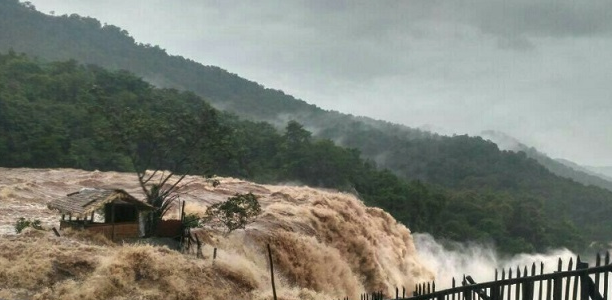
Kerala floods: death toll rises to 375
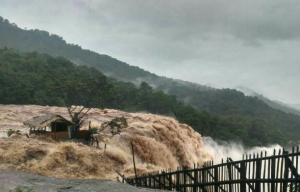
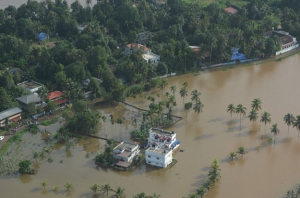
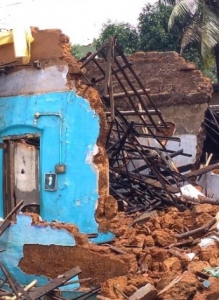
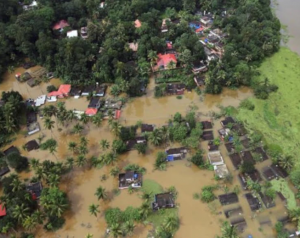
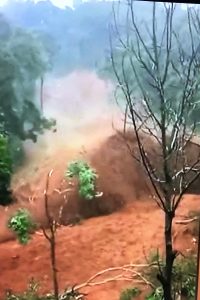
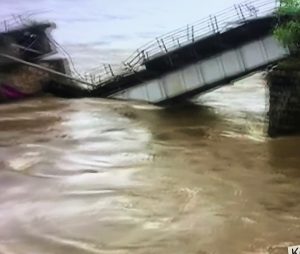

The state of Kerala in India has so far received 37.5 per cent excess rainfall in just two and half months. 26 more people were reported dead on Thursday taking the death toll to 375 over 80 dams opened. Some districts like Idukki, have received 83.5 per cent excess rainfall. Around 3000 people have been rescued from Ernakulam and Pathanamthitta districts and have a disrupted air, rail, and road traffic in several places. There is will little respite from heavy rains for the next 48 hours till August 19, 2018, according to the Indian Meteorological Department. Many parts of Kochi have been flooded, with Aluva one of the worst-affected areas with fresh landslides in Idukki and the northern districts of Malappuram and Kannur.
Popular tea plantations destinations like Munnar and Ponmudi are almost cut-off because of landslides. Life comes to a standstill as heavy rains to continue to batter for next 2 days.
North Paravur in Ernakulam district was heavily battered as the deluge literally cut it off from adjoining areas with communications, connectivity, drinking water, and power supply all remain badly hit. “ Water level rose alarmingly this morning and many of our village officers remain marooned in camps, their own houses or even village offices and could not be contacted. We are in desperate need of food, drinking water, and sanitary napkins. Roads shortly after Paravur bridge connecting Paravur with Thrissur and Kodungalloor remains flooded. Both the routes to Ernakulam remains restricted after Cheriapilli Bridge developed a crack and Arattu Kadavu bridge is so badly flooded that remained very risky with high water levels which could easily submerge smaller vehicles” according to an official.
Further heavy rain is expected to push water levels even higher as more than 250, 000 people have been displaced by the worst flooding in the region for nearly a century. Kochi airport remains closed until 26th August 2018.
Kerala has 41 rivers flowing into the Arabian Sea, and 80 of its dam are now said to be open after being overwhelmed.
Google said that flood victims waiting for relief in flood-hit Kerala can share their location even when they are offline. Flood victims can use their Android devices to generate the “plus code” of their location and share it over a voice call or a text message. It can be used to find or share a place on Google maps.
Animal rights group Humane Society International India is working towards rescuing stranded animals in Kerala. The organisation has already rescued 13 dogs and a kitten, some of whom were found tied and abandoned. The group is co-ordinating with government veterinary hospitals to accommodate animals across Kerala.
Pinarayi Vijayan, Kerala’s chief minister, said last night that 324 people had died in the floods, with much of the state still under water, the death to is expected to rise. A World Bank report earlier this year warned that South Asia Appeared increasingly vulnerable to flooding as a result of rising average temperatures, and changes in rainfall patterns.
Kerala is one of the more prosperous parts of India, with one of the country’s highest literacy rates and successful tourism and agriculture export industries.
Kerala government is now estimating the total cost of the flooding damage at more than Rs 500bn (£ 5.5 bn) and apart from extensive infrastructure damage, the disaster has wreaked havoc on the state’s important tea and rubber crops.
According to India’s Automotive tyre Manufacturers’ Association, “this month rubber production in Kerala would be about 80 per cent lower than usual.
A study last year by the Indian Institute of Tropical Meteorology found the frequency of extreme rain events in central India had tripled between 1950 and 2015. They pointed to rapid warming of the Arabian Sea, which led to changes in rain and wind patterns
